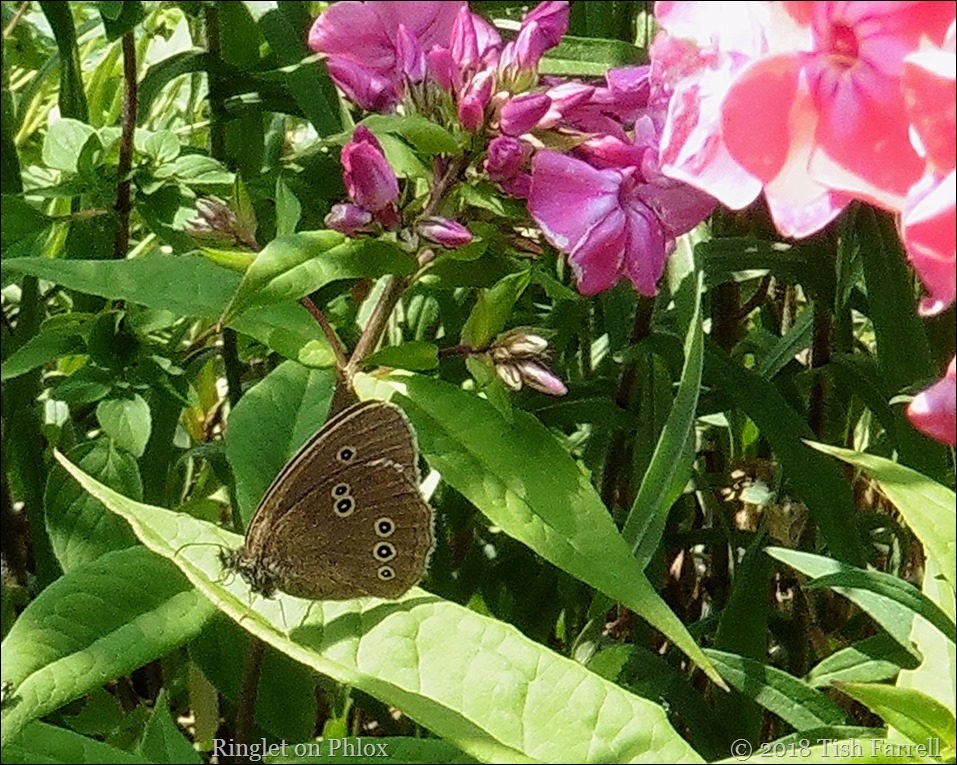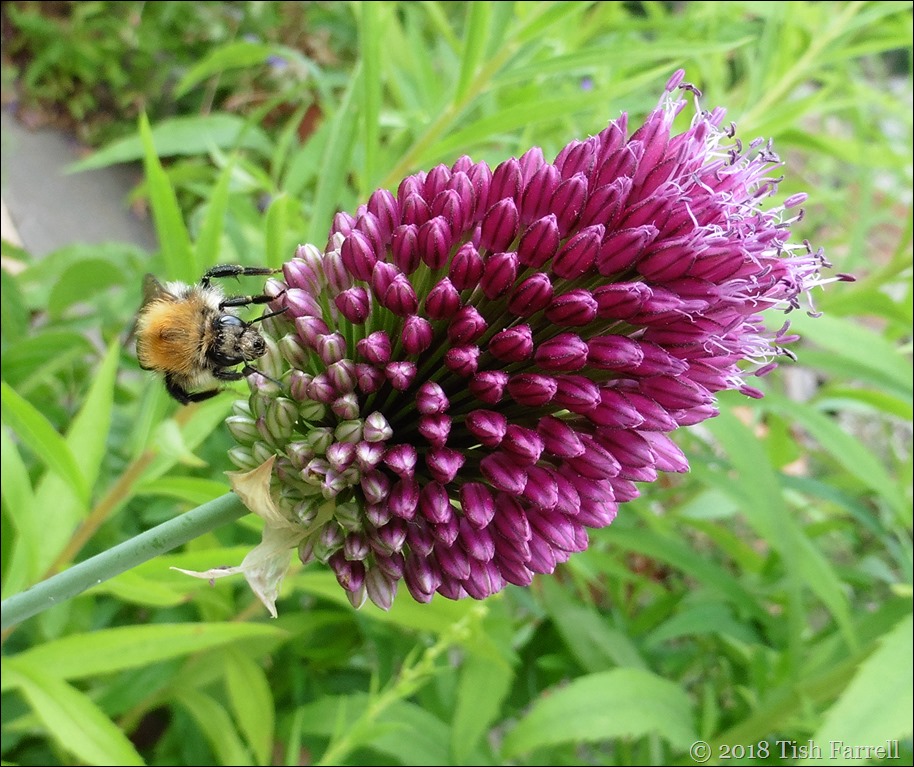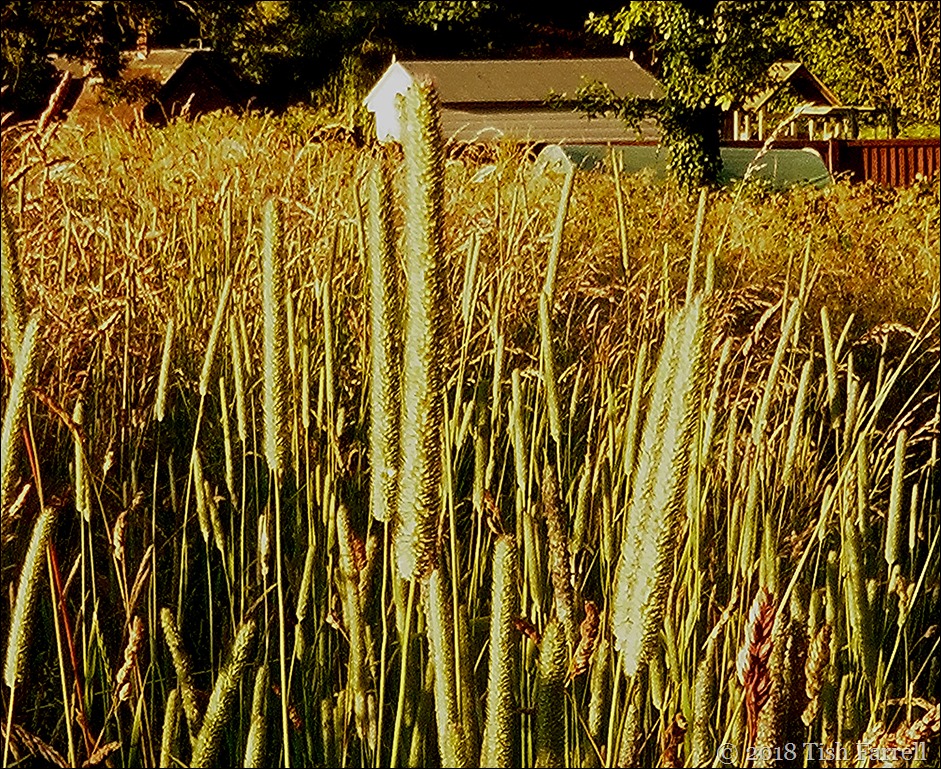It was nearly 7 pm last night when I finally thought it might be cool enough to head up the field to the allotment. In places, the nettles and grasses are leaning over the path at ear-height, and the nettle stings can be vicious, even through clothing. At one point the makeshift path alongside the rapeseed crop all but disappears, and it’s a question of remembering to turn left at the opium poppy, which was fine when it was flowering redly, but not so easy to spot now it’s gone to seed. I’m beginning to think I need to go out armed with a machete. Also the ground beneath my feet is so unyielding, it is difficult to walk on; baked into unexpected ridges and contours that are hard to navigate when you can’t see the way ahead. Who would have thought going gardening could be so challenging.
Of course, I had to stop to take this photo, the sun shining through the allotment boundary hedge.
On the plot I have been trying to shelter the plants’ roots with whatever vegetation I can find up there: comfrey, horseradish leaves, even rhubarb leaves. I’m now eyeing up the goat willow tree on the neighbouring abandoned plot, thinking a little prune of its leathery foliage might make some useful shading material.
So far things are surviving – apart from the strawberries that is, and the broad beans which produced a half-hearted crop and then fainted away. The most astonishing success, at least so far, is the sweet corn. It just keeps on growing, and with scarcely any watering, which is very strange for sweet corn. I bought the seedlings by post after the seeds of my own first sowing rotted. They were tiny when I planted them out in May – no more than a hand’s width tall. Now look at them.


They cost £2 for 20 from Delfland Nurseries which probably works out cheaper than growing them yourself from seed, and certainly cuts out the faff. I also bought some of their Iznik mini cucumber seedlings, which are now producing well in the polytunnel. The fruits are about 4 inches long when ready to pick, and delicious. The best thing is you eat the whole thing at one go, so no more squishy-cucumber-end discoveries in the fridge.

The Black Russian tomatoes are busy fattening in the next door bed. They are now one of our favourite tomato varieties, under-sown here with dill.


Outside, the runner beans are struggling to get up their sticks, but we’ve had our first good picking of the climbing Alderman peas. These peas are supposed to continue cropping over the season, but I’m not sure that this will happen with four more weeks of drought and heat promised. I have just planted out another lot, sown for quick germination in lengths of plastic gutter, and I shall definitely grow them again next year.
We’ve been told there is a ‘world shortage’ of lettuce in UK supermarkets. It doesn’t germinate well in heat. I have grown some of my own, but I was also very pleased that I bought a tray of ‘living salad’ lettuce from Waitrose. It was intended for cutting fresh into one’s sandwich, but I planted out the seedlings instead, outside covered with fleece and also in the polytunnel. So far it’s doing well. I reckon there were about 50 seedlings in the tray, several different varieties, so plenty of lettuce to share with neighbours.
Now for some more hot-plot shots.






One unforeseen circumstance of the hot weather is that my piled-high compost heaps are bone dry, and are therefore doing very little rotting down. While I don’t feel I can help them along by actually watering them, I have heard that the addition of urine is very beneficial, and since most of the allotmenteers are chaps, it has occurred to me to put up ‘please pee here’ signs. All deposits gratefully received.

copyright 2018 Tish Farrell

























































